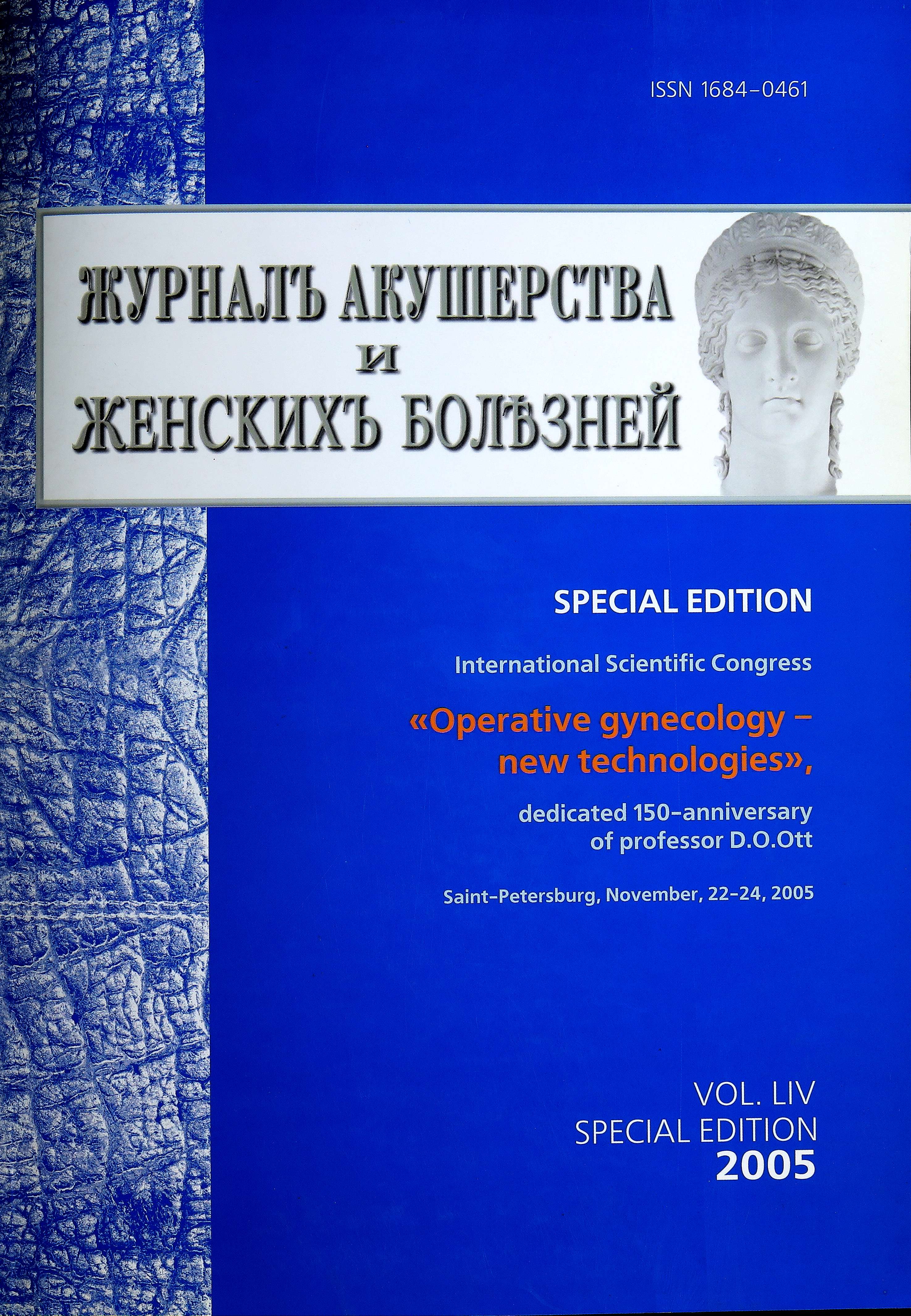An application of allogenic skin's cells for a treatment of genital fistulas
- Authors: Ermolinskiy I.I.1, Меl՚ко А.I.2, Zarubenko I.P.1, Kira Е.F.1
-
Affiliations:
- National medical-surgical centre named after N.I. Pirogov of the Ministry of Health of the Russian Federation
- National medical-surgical centre named after N.I. Pirogov of the Ministry of Health of the
- Issue: Vol 54, No 5S (2005)
- Pages: 63-63
- Section: Reviews
- Submitted: 15.11.2005
- Accepted: 09.11.2021
- Published: 15.11.2005
- URL: https://journals.eco-vector.com/jowd/article/view/87448
- DOI: https://doi.org/10.17816/JOWD87448
- ID: 87448
Cite item
Abstract
An urogenital fistulas are serious complication after heavy multiple traumas, wounds, and radical operations. We offer a method of conservative treatment of the given pathology with the help of cultures of allogenic cells.
Full Text
An urogenital fistulas are serious complication after heavy multiple traumas, wounds, and radical operations. We offer a method of conservative treatment of the given pathology with the help of cultures of allogenic cells.
The purpose of research: to estimate the first experience and opportunity of allogenic skin’s cells application for a treatment of genital fistulas.
Object and methods. We carry out the treatment of 12 patients in the age from 38 till 56 years (on the average - 44 years) with genital fistulas, existed from 3 to 12 months. 9 patients had bladder-vaginal fistulas, and 3 had rectovaginal fistulas (one patient had three fistulas simultaneously). The diameter of fistulas was from 1 up to 4 mm. The causes of all fistulas were posttraumatic due to of complications during operations. All patients received antibiotics and antiinflammatory therapy before the manipulation. 4 patients were unsuccessfully operated for treatment of fistulas before the transplantation of allogenic skin’s cells. In our clinical research there were used fibroblasts and keratinocytes, which were grown up on microcarriers.
Results of research. Recieved data show that unstraight fistulas were closed for 5-7 days after application of cells (n = 5). In opposite, straight fistulas had recurrent and required the second transplantation due to the healing had come on 12th-14thdays. Three-multiple transplantation was executed at 4 patients. Thus the closing of a fistula had come only at one patient. The preservation of fistulas was ascertained at three patients: in two cases the fistulas were bladder-vaginal and in one - rectovaginal. It was marked, that in two inefficient cases straight linear bladde-rvaginal fistulas took place and their initial diameters was about 4 mm. In a case of unsuccessful treatment of rectovaginal fistula we had met three fistulas: two invasived into vagina and one — in perineum area between back soldering and anal sphincter.
Conclusion. Thus, the first experience of using of allogenic cells of skin in treatment of genital fistulas allows to continue the development of the given alternative method and its introduction in medical practice.
About the authors
I. I. Ermolinskiy
National medical-surgical centre named after N.I. Pirogov of the Ministry of Health of the Russian Federation
Author for correspondence.
Email: info@eco-vector.com
Russian Federation, Moscow
А. I. Меl՚ко
National medical-surgical centre named after N.I. Pirogov of the Ministry of Health of the
Email: info@eco-vector.com
Russian Federation, Moscow
I. P. Zarubenko
National medical-surgical centre named after N.I. Pirogov of the Ministry of Health of the Russian Federation
Email: info@eco-vector.com
Russian Federation, Moscow
Е. F. Kira
National medical-surgical centre named after N.I. Pirogov of the Ministry of Health of the Russian Federation
Email: info@eco-vector.com
Russian Federation, Moscow
References
Supplementary files







